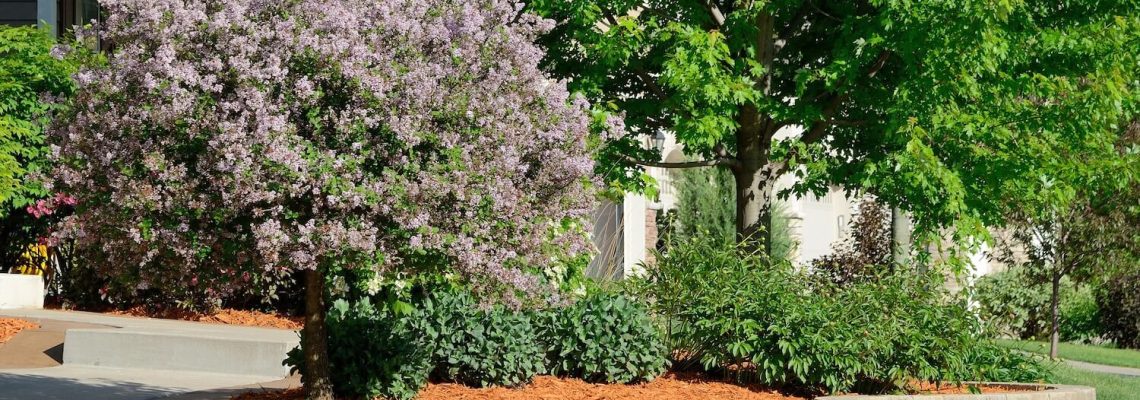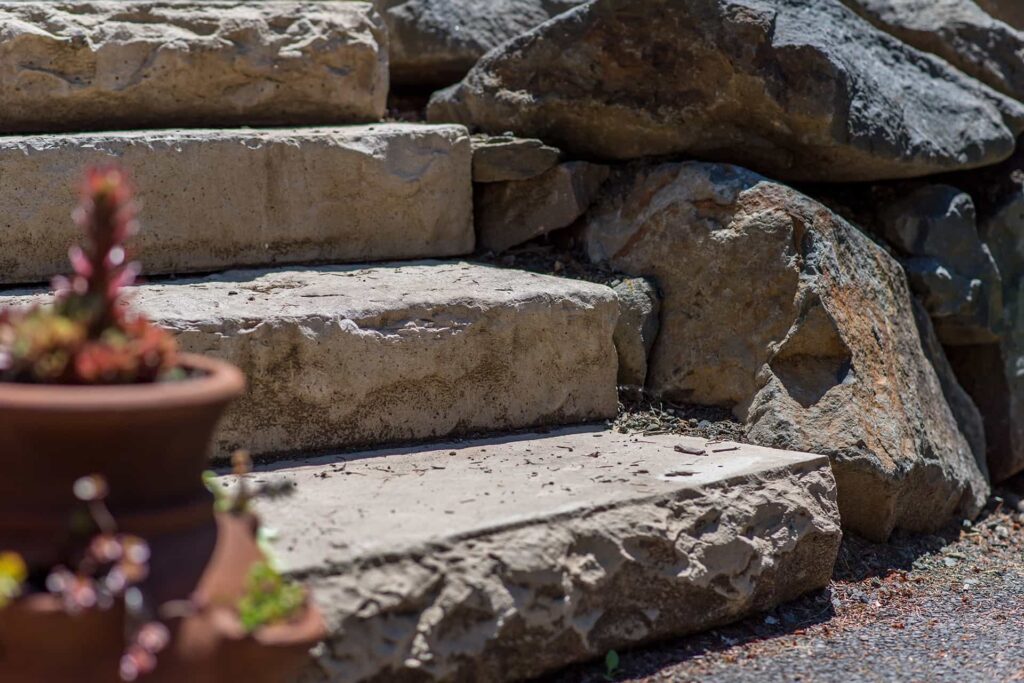In the realm of landscape design, pavers have emerged as versatile and durable solutions to a myriad of challenges faced by homeowners and landscape architects alike. Whether enhancing curb appeal, transforming outdoor living spaces, or addressing drainage and slope issues, pavers offer a range of benefits that make them a preferred choice for many outdoor projects.
This article explores the various ways pavers can be used to tackle challenges, providing insights into their types, materials, applications, and maintenance.
Understanding Pavers: Types and Materials
Pavers come in diverse materials, each offering unique advantages suited to different aesthetic preferences and functional requirements. Concrete pavers, for instance, are widely chosen for their affordability, durability, and ease of installation. They are available in various colors, shapes, and textures, allowing for versatile design possibilities. Natural stone pavers, such as limestone or granite, lend a timeless elegance and durability, albeit at a higher cost. Brick pavers offer a classic charm and are known for their strength and color retention over time.
Choosing the right type of paver depends on several factors, including the climate of the region, the intended use of the paved area, and the desired aesthetic. For example, in regions with harsh winters, durable materials like concrete or brick are preferred due to their ability to withstand freeze-thaw cycles without cracking.
Enhancing Curb Appeal: Creating Inviting Entrances
One of the primary uses of pavers is in creating welcoming entrances and walkways that enhance the curb appeal of residential properties. The careful selection of paver materials and designs can significantly impact the overall aesthetics of a home’s exterior.
Homeowners often opt for concrete or brick pavers laid in intricate patterns to create visually appealing pathways leading from the sidewalk to the front door. This not only adds a touch of elegance but also improves accessibility and safety. Incorporating contrasting colors or textures can further highlight the path and complement existing landscaping features.
For instance, a suburban home might benefit from the use of interlocking concrete pavers in earth tones to blend with the natural surroundings. These pavers can be arranged in herringbone or basketweave patterns to add visual interest while providing a durable and low-maintenance pathway.
Transforming Outdoor Living Spaces
Pavers play a pivotal role in extending living spaces outdoors, creating functional and aesthetically pleasing patios, seating areas, and outdoor kitchens. Unlike traditional concrete slabs, which can crack over time, pavers offer flexibility and durability. They can withstand heavy foot traffic and are easy to repair if damaged.
Designing a patio with pavers allows homeowners to personalize their outdoor space.
By choosing from a variety of colors, shapes, and textures, they can create a patio that complements the architectural style of their home and blends seamlessly with the natural landscape. Incorporating permeable pavers in patio designs enhances sustainability by allowing rainwater to infiltrate the ground, reducing runoff and replenishing groundwater supplies.
Outdoor kitchens and dining areas can also benefit from the use of pavers. The heat-resistant nature of materials like concrete or natural stone makes them ideal for use around grills and fire pits. Pavers can be arranged in intricate patterns to define different functional zones within the outdoor space, such as cooking, dining, and lounging areas.
Solving Drainage Issues: Permeable Pavers
In regions prone to heavy rainfall or poor drainage, permeable pavers offer an innovative solution to manage stormwater runoff effectively. Unlike traditional impermeable surfaces, such as asphalt or concrete, permeable pavers allow rainwater to filter through the joints between them and infiltrate into the ground below.
This feature helps to reduce the strain on municipal stormwater systems and minimizes the risk of localized flooding. Permeable pavers are typically made from porous materials such as pervious concrete or interlocking concrete units with gaps filled with gravel or crushed stone. They are designed to support vehicular traffic while promoting sustainable water management practices.
Homeowners and commercial property developers alike are increasingly turning to permeable pavers to meet regulatory requirements for stormwater management and enhance the environmental sustainability of their projects. Case studies demonstrate successful applications in parking lots, driveways, and pedestrian walkways, where permeable pavers have proven effective in reducing runoff and improving water quality.
Tackling Slope Challenges: Building Retaining Walls
Pavers are also utilized in landscaping to create sturdy and visually appealing retaining walls that address slope challenges. Whether it’s preventing soil erosion or creating terraced garden beds, paver retaining walls offer a durable alternative to traditional materials like timber or concrete.
The interlocking nature of pavers provides structural stability, making them well-suited for supporting soil and plantings on sloped terrain. This allows homeowners to maximize the usable space in their yards while adding dimension and interest to the landscape design.
Engineers and landscape architects consider factors such as soil composition, drainage, and slope gradient when designing paver retaining walls. By selecting the appropriate materials and installation techniques, they ensure the longevity and effectiveness of the structure in managing elevation changes and enhancing the overall aesthetic appeal of the property.
Creating Functional Pathways and Driveways with Pavers
Pathways and driveways are essential elements of any landscape design, providing access to different areas of the property while enhancing its overall functionality and curb appeal. Pavers offer distinct advantages over traditional materials like asphalt or poured concrete, including durability, aesthetic versatility, and ease of maintenance.
Homeowners can choose from a wide range of paver styles and patterns to create pathways that complement the architectural style of their home and blend harmoniously with the surrounding landscape. For instance, natural stone pavers can be used to create a rustic pathway through a garden, while sleek concrete pavers can define a modern driveway.
In addition to their aesthetic appeal, pavers are easy to repair and replace if damaged, unlike concrete slabs that require costly and time-consuming repairs. Regular maintenance, such as sweeping and occasional pressure washing, helps to preserve the beauty and functionality of paver pathways and driveways for years to come.
Designing Low-Maintenance Landscapes
Pavers play a crucial role in designing low-maintenance landscapes that require minimal upkeep while enhancing the beauty and functionality of outdoor spaces. By incorporating pavers into xeriscape and drought-tolerant designs, homeowners can reduce water consumption and maintenance costs associated with traditional lawns and gardens.
Xeriscape principles emphasize the use of native plants, efficient irrigation systems, and permeable surfaces like pavers to create sustainable landscapes that thrive in arid climates. Pavers can be arranged in patterns that mimic natural stone or gravel, creating visual interest while conserving water and promoting soil health.
For example, a backyard patio designed with permeable pavers allows rainwater to infiltrate into the ground, reducing the need for supplemental irrigation and supporting native plantings. This not only conserves water but also enhances biodiversity and improves the overall resilience of the landscape to drought and climate variability.
Incorporating Pavers into Urban Landscapes
In densely populated urban areas, the use of pavers offers a practical solution to maximize outdoor space while enhancing the aesthetic appeal and functionality of public and private settings. Pavers can be used to create pedestrian plazas, rooftop gardens, and outdoor seating areas that contribute to the livability and sustainability of urban environments.
Urban designers and architects value the versatility of pavers in transforming underutilized spaces into vibrant community hubs. Permeable pavers, in particular, help to mitigate the urban heat island effect by reducing surface temperatures and promoting natural cooling through evaporation and transpiration.
Successful urban renewal projects showcase the transformative impact of pavers in revitalizing neglected areas and creating inclusive public spaces. By incorporating green infrastructure elements such as rain gardens and bioswales alongside paver pathways, cities can improve stormwater management and enhance biodiversity while promoting active transportation and social interaction.
DIY vs. Professional Installation: What to Consider
When planning a paver project, homeowners must decide whether to undertake the installation themselves or hire a professional contractor. While DIY installation can save money upfront, it requires careful planning, specialized tools, and knowledge of proper techniques to ensure a durable and aesthetically pleasing result.
Homeowners with experience in landscaping and construction may choose to install pavers themselves, following manufacturer guidelines and best practices for site preparation, base construction, and joint sanding. However, for complex projects involving slope stabilization, drainage systems, or intricate patterns, hiring a licensed and insured contractor is recommended to ensure compliance with local building codes and industry standards.
Professional paver installation companies have the expertise and equipment to handle large-scale projects efficiently, minimizing disruption to the property and ensuring the longevity of the paved surfaces. They can provide design assistance, material recommendations, and warranty coverage that may not be available with DIY installations.
Sustainability and Longevity: Maintaining Pavers
Proper maintenance is essential to preserving the beauty and functionality of pavers over time. Regular cleaning, sealing, and joint sanding help to protect against stains, weed growth, and color fading caused by exposure to sunlight and inclement weather. The frequency of maintenance tasks depends on factors such as climate, foot traffic, and the type of paver material used.
Cleaning pavers involves removing dirt, debris, and organic matter using a broom, leaf blower, or gentle pressure washing. For stubborn stains or discoloration, specialized cleaners and sealers designed for pavers can be applied according to manufacturer instructions.
Sealing pavers helps to enhance their color and durability while providing a protective barrier against moisture and UV damage. Sealants are available in matte, semi-gloss, and high-gloss finishes to complement the desired aesthetic of the paved area. Re-sanding the joints between pavers with polymeric sand prevents weed growth and helps to maintain the structural integrity of the pavement.
By following a regular maintenance schedule and addressing issues promptly, homeowners can extend the lifespan of their pavers and preserve the investment in their landscape design. Consulting with a professional paver installer or landscape maintenance provider can provide valuable guidance on best practices for maintaining pavers in optimal condition.
Outdoor Space Conclusion
Pavers offer a versatile and durable solution to common landscape challenges, from enhancing curb appeal and transforming outdoor living spaces to managing drainage issues and creating functional pathways. By choosing the right type of paver and design approach, homeowners can achieve aesthetic harmony, sustainability, and long-term value in their outdoor environments.
Whether used to create inviting entrances, build retaining walls, or design low-maintenance landscapes, pavers contribute to the beauty and functionality of residential and commercial properties alike. By understanding the benefits of different paver materials, incorporating sustainable design principles, and investing in proper installation and maintenance, homeowners can enjoy the lasting benefits of pavers for years to come.


